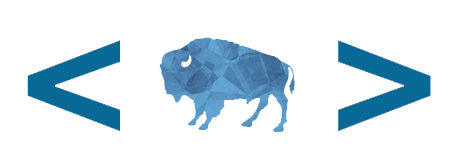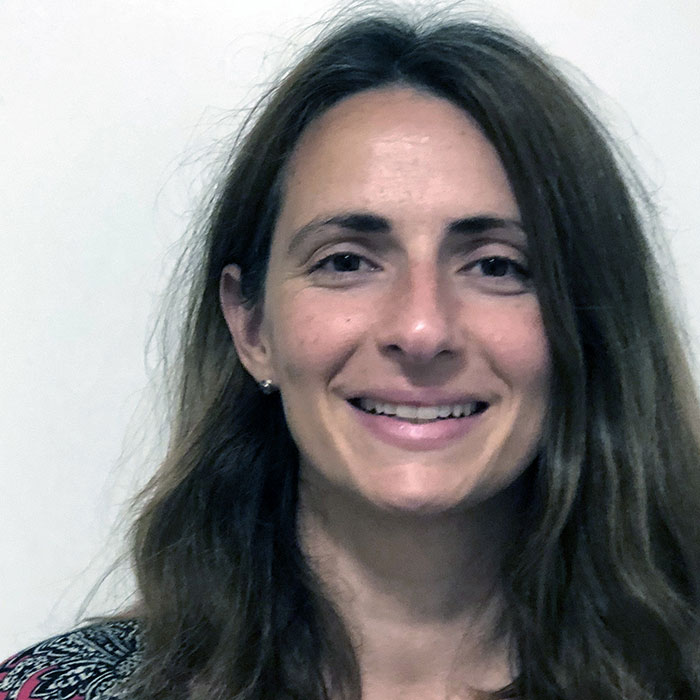If you had asked me two years ago what a product manager is, I wouldn’t have known. And, yet, today, that is one of my titles.
My journey here has included many days when I felt unqualified and wondered if I could bring my best to our team and build a successful product. Along the way, I have been lucky to receive guidance and coaching from experienced product managers at the General Services Administration’s 18F and to receive my supervisor’s support to develop my product management skills through formal and informal training.
Our product team has also allowed me the flexibility to explore approaches and periodically adjust and shape my role into something that works for our needs. Even though I’ve only been in this role for a year, and I am still learning, my experience so far has helped shape the way I view my responsibility as a public servant.
My path into product management
As you likely guessed when I mentioned I only recently learned about product management, I haven’t traveled a well-beaten path to this position. Many years ago, I took a web development class during my freshman year of college. I enjoyed the class but quickly thereafter decided to pursue other subjects and largely abandoned any effort to understand technological developments. Clearly, web development is not a field that you can ignore for any length of time and come back to later with a meaningful understanding. So, how did I end up as a product manager for a website? I didn’t make the decision to update my skills and change fields, but I did pursue a position that has allowed me more learning opportunities than I expected.
My transition into product management wasn’t the first time in my career I’ve gone out of my comfort zone. Shortly after graduating from college with my bachelor’s in economics and my minor in philosophy, I joined the Department of the Interior, Minerals Management Service as an economist. Since that title aligned well with my schooling, I expected to have a good understanding of how to do the job. I was wrong about that. The position required me to understand solid minerals production and valuation rules as well as a lot about auditing.
I didn’t know a thing about coal or hard minerals, so I had a steep learning curve. As my first government job, it also took me time to understand the legal, regulatory, and policy environments that greatly influenced the way we worked. I put in the work and, before too long, was able to positively contribute to the organization.
That was my first dive into an unexpected field but certainly not my last. Since that time, I’ve worked in private industry and as a contracting specialist before returning to the Department of the Interior at the Office of Natural Resources Revenue, where I learned many technical aspects of oil and gas production on public lands. I also returned to school to study Environmental Policy Management, Energy and Sustainability.
My varied experiences likely led me to my current position. My knowledge in economics, solid minerals, and oil and gas were important but probably not as important as my growth mindset. Learning new things motivates me. So, when I saw a position in the team that managed the U.S.’s implementation of the Extractive Industries Transparency Initiative (EITI), I was intrigued because I knew I could explore new things and learn a lot. So, I applied.
In early 2017, I was hired to supervise a team of program analysts who helped with the U.S. implementation of the EITI standards—the origin of our site. Early on, my position entailed a lot of coordination with 18F who had designed and developed the website for the Department of the Interior.
My small team also took on responsibility for supporting an advisory committee, which was not directly tied to EITI implementation. Later in 2017, the U.S. withdrew as an implementing country from EITI, but the Administration maintained the commitment to enhancing transparency and accountability by providing open data through our newly named Natural Resources Revenue Data site.
Around the same time, we began implementing a plan to bring the site management responsibilities in-house. For years, 18F provided the technical expertise that the Department of the Interior needed to execute our vision for a user-centered, open data site, but 18F does not stay on projects permanently. We also knew that ONRR would benefit in many ways by bringing the site maintenance in-house. These benefits include lower site management costs and the ability to expand our own technical capacity.
In order to accomplish the transition from 18F, we hired three Innovation Specialists on 2- to 4-year term appointments. In the first few months after our first Innovation Specialist joined us, we were planning for that person to serve as product manager, giving our small team of permanent employees a few years to develop the skills to take on the site management responsibilities.
Our plans changed when our first innovation specialist decided to leave for an opportunity outside of government. It turned out, we wouldn’t have the luxury of observing and slowly learning the skills before we took over the product management function. So, with a bit of apprehension, and a bit more excitement, I became the official Natural Resources Revenue Data product manager in early 2018.
Help along the way
Luckily, I was not thrown into the deep end without a buoy, as we still had a transition agreement with 18F for a few more months. The 18F employee who had been managing the product began co-working with me as much as possible. She provided me training and resources that helped me better understand the role and tools of the trade, such as roadmapping. I began taking over meetings that she had been running, but we would have weekly coaching meetings to discuss challenges I encountered and questions I had.
One of the first things I did, under the guidance of our 18F coaches—and with the help of our content strategist—was to create our product framing document. Since we had recently withdrawn from EITI, it was the perfect opportunity to evaluate and prioritize our users’ needs and document our vision.
My supervisor has always supported my continued development in product management, and I was able to take a 3-day product management course about 6 months into taking over the role.
That was a good time for a deeper look into the traditional role, and it provided me the opportunity to network with others in product management positions who represented a wide variety of industries. Through this class and discussions with the other product managers, I understood that my role varied quite dramatically from many product managers’ roles. Since we have a very small team (one UX designer, one content strategist, and one developer) exclusively focused on our product, each member of the team has to had to pick up the slack and develop skills in other areas.
Making it my own
When 18F signed off from our project, it was a little scary to be off on our own. It was also a great opportunity to take time to evaluate how we were managing our product, team roles, and my responsibilities as product manager. I’ve never been a full-time product manager, as I have had other duties—including committee support and supervision—throughout my tenure. So, I needed to set realistic expectations for my team and myself.
My responsibilities as product manager include defining the product vision and ensuring we always keep our prioritized user needs in mind when determining what features to add to our site and when. I am also responsible for ensuring we have a defendable, consistent approach to evaluate our product’s success. Since we have a very small team, I also have duties that often would go to a scrum master. I run our sprint planning, demo, review, and retro meetings as well as daily standups.
In collaboration with our product team, I’ve made many adjustments to how I run the meetings over the last year, and I’ve also called upon the other team members to help me carry the load in many situations. When I am out of the office, our content strategist or UX designer have often led the meetings.
At some point over the last year, our team felt that our sprint planning meetings weren’t as strategic as we would like, so we adjusted our meeting schedule. We now set the goals for our next sprint two days before we finish our sprint planning. This allows all of the team members time to identify issues that we should address during the sprint and spreads the planning workload throughout the team. We have also adjusted the format of our roadmap and made changes so we can better tie our roadmap priorities to our issue priorities.
As I continue to learn in this role and balance my product management responsibilities with other job requirements, I expect to continue experimenting with new ideas and methodologies in hopes of optimizing my effectiveness and the success of our team and product.
I encourage my team members to bring me their concerns. While I don’t always have solutions ready, we are often able to brainstorm together and make tweaks to our processes in hopes of continuously improving the way we work.
What’s next
I still have a lot to learn about product management, but I know many of the skills I’ve gained over the last year will be useful in any future role. In work and in life, I’m inclined to understand the reasons we do what we do. Over the years, I’m sure I’ve annoyed a few coworkers and bosses with my questions on why we have specific policies, procedures, or products. Despite my questioning nature, I haven’t always had the best tools to investigate and answer those questions for myself.
Through product management, I’ve learned more about the importance of understanding the problem before designing a solution, and I’ve gained tools and ideas that I can use to better evaluate the success of a product. Whether the product is a report, procedures, or a website, it is essential to know who the users are and understand their needs. If we don’t take time to do that, we end up developing something that solves the wrong problem.
Within government, it can be challenging to understand the success of a product. We don’t have profit margins to help drive our decisions. While we can often measure some version of return on investment, much of the work that we do as public servants has intangible or hard-to-measure benefits. How do we measure the value of promoting an open government that is accountable to citizens? We want to be a little piece of an effort to increase trust in government. What is that worth?
Despite the challenge of measuring some results, it is just as important in government service that we have ways to evaluate the success of our products. Over the last year, our team has put a lot of thought into developing metrics so that we can measure and understand the success of our site.
Through my experience as product manager, I’ve solidified my inclination to question whether what we’re doing is the best use of our resources. We must always keep a focus on the value we are delivering to the public. I want to do my best for the American citizens we serve, and learning more about product management has helped me develop strategies to do that.
 Open Data, Design, & Development at the Office of Natural Resources Revenue
Open Data, Design, & Development at the Office of Natural Resources Revenue